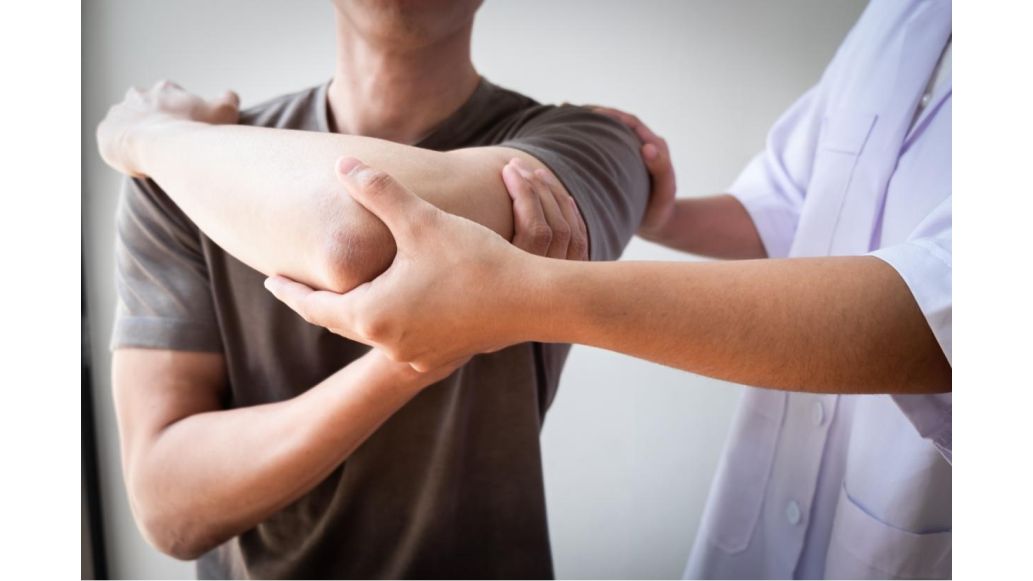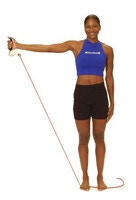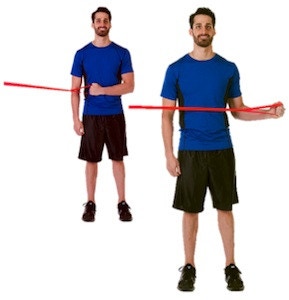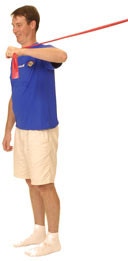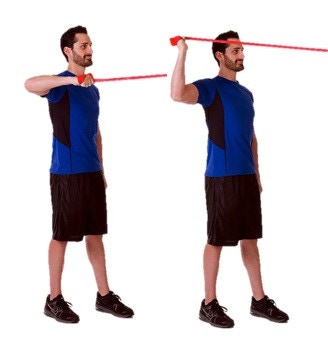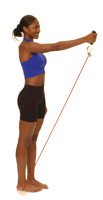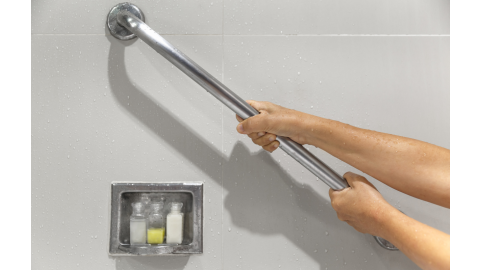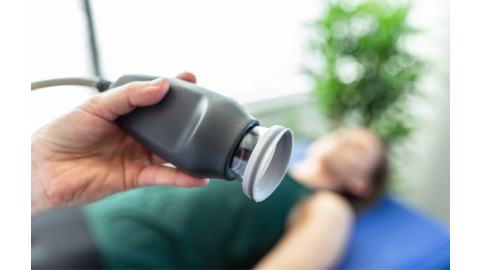If you have significant shoulder pain or have had a sudden rotator cuff tear, you may be recommended surgery to repair the tear to reduce the pain in your shoulder. After surgery, your physical therapist will work with you to help build strength as well as improve range of motion. Here are 5 rehabilitation exercises to help you fully recover!
What to Expect From Your Doctor
Rotator cuff injuries often develop as a result of either a traumatic event or long-term overuse of the shoulder. Acute rotator cuff tears are those that occur suddenly, such as a fall or lifting a heavy object. Chronic rotator cuff tears are much slower to develop, due to repeated actions with the arms working above shoulder level.
To determine the cause of your shoulder pain, your doctor will complete a thorough examination that will assess your ability to move your arm and identify weaknesses. Your doctor may move your arm out to the side or raise your arm and ask you to resist a level of force. If your condition is severe, you may require surgery to restore use of the shoulder in which physical therapy will be an important part of your recovery process.
For the first 6-8 weeks after surgery, your surgeon will ask you to wear a sling to protect the repaired tendons. The next phase of recovery, from 8-12 weeks, is focused on restoring movement and building strength without lifting heavy objects. Most of the recovery is complete around 6-9 months after surgery. If the shoulder repair is stressed too early, the tendons will most likely tear again.
4 Shoulder Movements for Pain Relief
As you reduce the use of your sling, your physical therapist (PT) will recommend exercises that can help you restore mobility to your shoulder. These isometric exercises will strengthen the core muscles of your shoulder blade (scapula) and the rotator-cuff muscles that provide additional support and stability to your shoulder.
We’ve come up with a few stretches to implement in the first few days following your procedure. These movements will help loosen stiff muscles and relieve shoulder pain and discomfort. Make sure to check with your PT before beginning any new exercises.
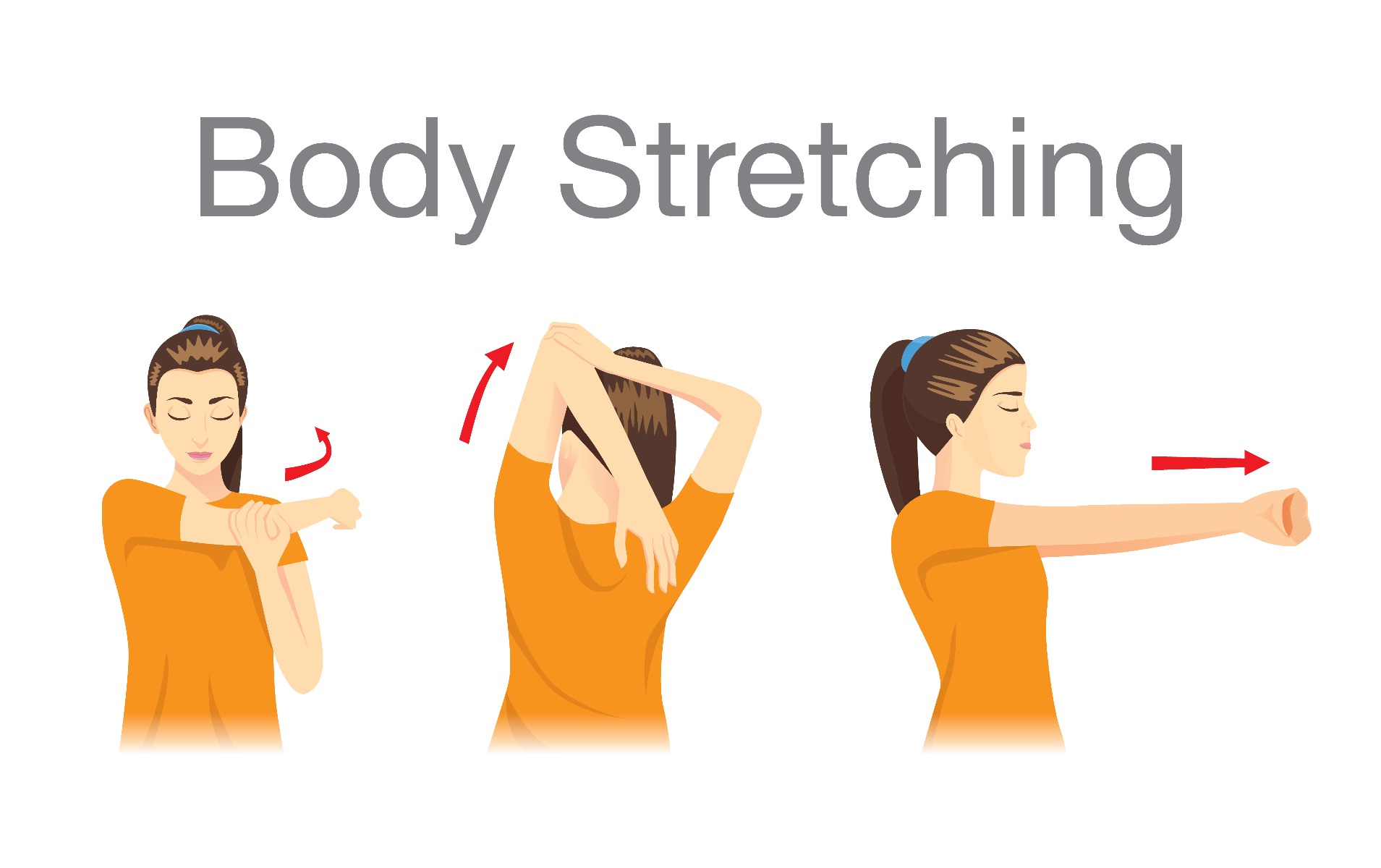
- Pendulum: Bend over at the waist and let the affected arm hang down. Using your body to initiate movement, swing the arm gently forward and backward and in a circular motion. Do this exercise for 2-3 minutes, 3 to 5 times per day
- Cross-Over Arm Stretch: Lift one arm so that it is perpendicular to the floor and extend it straight without locking it. Take the wrist of the extended, lifted arm with the opposite hand. Gently pull the arm across the front of the body, trying to hug the chest with the arm. Hold the stretch for 10 seconds before slowly releasing it. Repeat on the other side
- Supine Passive Arm Elevation: Lie on your back. Hold the affected arm at the elbow with the opposite hand. Using the strength of the opposite arm, lift the affected arm upward, as if to bring the arm overhead, slowly lower the arm back to the bed. Do 10 repetitions, 3 times per day
- Doorway Stretch: Stand in a doorway, holding both sides of the frame at just below shoulder height. Lean forward gently, keeping the back straight until there is a light stretch in the front of the shoulders. Lean further forward to intensify the stretch if necessary. Hold for 5 seconds before slowly returning to a standing position
To maximize your recovery following rotator cuff repair/surgery, try implementing some additional exercises in your daily routine.
5 Rotator Cuff Exercises to Restore Mobility
Before exercising, warm up your muscles and tendons with a heating pad. You may also experience some mild soreness with these range-of-motion exercises. Ice packs applied to the shoulder can help relieve it, but if you develop sharp or severe pain, stop the exercises for a few days. Be sure to talk to your doctor or physical therapist before beginning any new exercise routine.
Each of the exercises provided below uses a resistance band to rehabilitate the rotator cuff. You can also try using TheraBand Shoulder Pulley during your rehabilitation program! The pulley attaches to a standard door jamb for use anywhere you need it. It is also divided into color-coded sections, allowing you to visually gauge progression and recovery. Check out shoulder pulley exercises on Performance Health Academy.
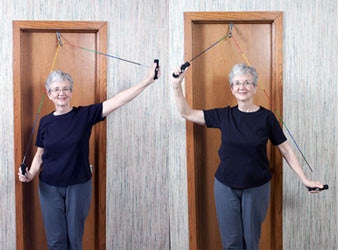
When choosing the resistance level right for you, start with a light resistance band and increase as you progress. If you’re having difficulty choosing, talk to your physical therapist.
|
|
|
|
|
|
|
|
|
|
Conclusion
Early on in your rehabilitation program, the aim is to reduce swelling and inflammation of the tendons and relieve compression in the subacromial space. Over the next several weeks, you will need to complete exercises to help strengthen the muscles and improve range of motion. Following rotator cuff surgery, your shoulder will be susceptible to reinjury. Make sure that you discuss treatment with your doctor and physical therapist before starting or attempting any exercises.
Now that you know exercises that can help with a rotator cuff injury, you can start the road to recovery!
References
Anonymous. (2012). Rotator Cuff and Shoulder Conditioning Program. AAOS. Retrieved from https://bit.ly/3iESbMy
Cluett, Jonathan. (2020). Rotator Cuff Injuries with a Resistance Band. VeryWell Health. Retrieved from https://bit.ly/3nrN9qs
Moore, Rebecca. (2018). 4 Rotator Cuff Rehab Tips for Professionals. Performance Health Academy. Retrieved from https://bit.ly/34vJKOF
Medical Disclaimer: The information provided on this site, including text, graphics, images and other material, are for informational purposes only and are not intended to substitute for professional medical advice, diagnosis or treatment. Always seek the advice of your physician or other healthcare professional with any questions or concerns you may have regarding your condition.








 France
France Australia
Australia